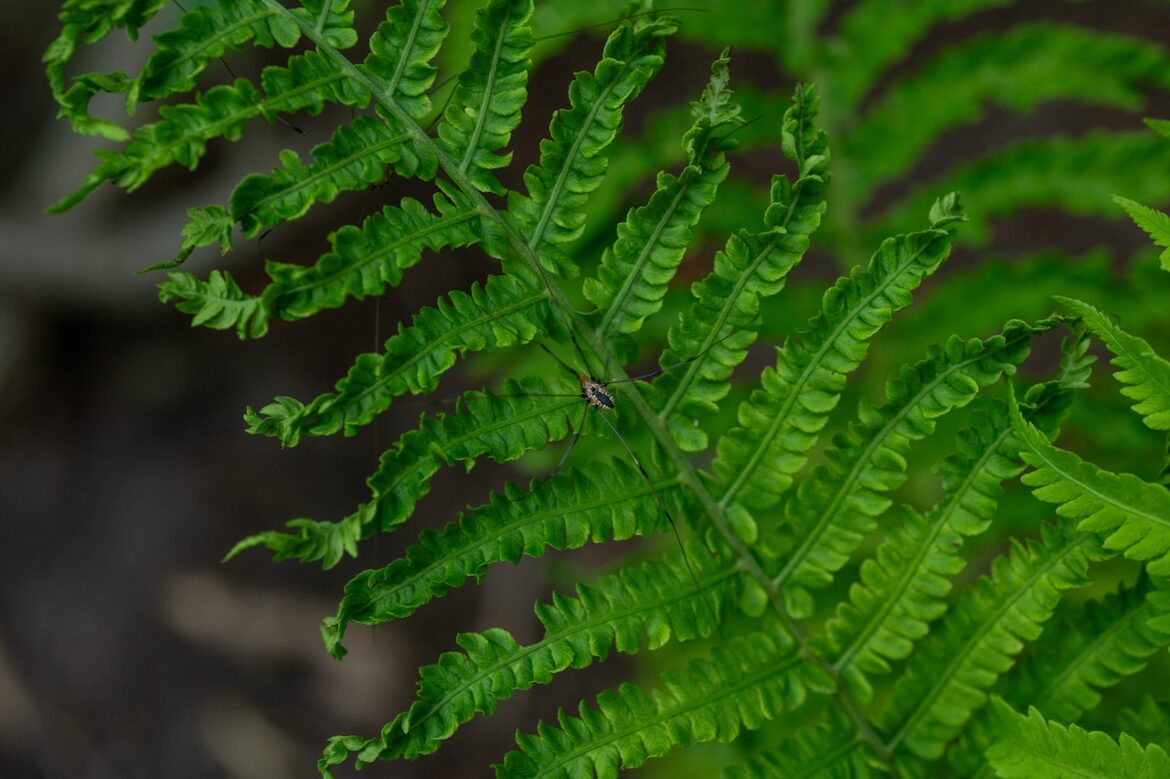CLEVELAND, Ohio — Every year as the temperatures drop across Northeast Ohio, well-meaning homeowners grab their shears and rakes for the annual ritual of the “total garden cleanup.”
Perhaps you’ve been doing the same. It seems responsible … right?
Not so fast.
According to local experts, this popular practice is a mistake that negatively impacts the local ecosystem.
“When gardens are cut back, they not only leave an aesthetic void but an ecological void as well,” said Marc Wise, founder and CEO of Native Landscapes and Gardens in Chagrin Falls.
 The evergreen fronds of the Christmas tree fern hold their shape and color year-round, creating lush texture in shaded areas.Dan Klotzsche 3colorphotography.
The evergreen fronds of the Christmas tree fern hold their shape and color year-round, creating lush texture in shaded areas.Dan Klotzsche 3colorphotography.
“Homeowners are essentially throwing out the nursery along with the leaves. Beneficial insects that are the base of our food chain live year-round in and among leaves and garden stalks.”
The big question: Why should you care?
“Leaving native plants upright over winter not only provides visual interest, it also provides a home for essential pollinators to overwinter safely,” Wise said.
“Without wintering plants, they cannot survive.”
The leaves and plant litter around the base of the stems also provide important insulation and shelter for creatures like queen bumblebees, beneficial spiders, salamanders, snails and toads.
Furthermore, leaving this organic matter to decompose in place is like “free fertilizer,” naturally enhancing your garden soil and increasing its vitality for the following season.
Beyond the insects, standing plant material provides an important food source for the birds that remain in the Cleveland area through the harsh winter months.
Standing seed heads are packed with the protein and fat that overwintering birds rely on when insect life is dormant. It’s a critical lifeline in the dead of winter.
Look out the window, and you just may notice that birds like American goldfinches, dark-eyed juncos and black-capped chickadees can be seen picking seeds directly from the dried cones of plants.
The biggest hurdle for homeowners is, of course, the aesthetic concern. However, Wise argues that selecting the right native plants can offer incredible “winter architecture” that looks stunning against a backdrop of snow.
It might even make a good Instagram post this holiday season.
“By selecting the right native plants, you can achieve incredible architectural interest, the way the snow catches on the dried stalks or the remaining color from a persistent seed head,” he said.
“It gives the landscape depth and purpose, even in the grayest Cleveland weather.”
Wise shared his top six native perennials and grasses that provide beautiful structure and color throughout the winter:
• Little bluestem — Schizachyrium scoparium ‘Standing Ovation’ — coppery-orange stems stay upright through snow, adding color and texture. It also provides shelter for overwintering insects and seed for birds.
• Switchgrass — Panicum virgatum ‘Northwind’ — tall, rigid plumes persist through winter storms. Its seeds feed sparrows and provide vertical structure in dormant landscapes.
• Purple coneflower — Echinacea purpurea ‘Magnus’ — dark seed heads remain bold and upright, offering visual contrast and food for goldfinches.
• Liatris dense blazing star — spicata ‘Kobold’ — slender spikes and tufted seed heads add fine texture, and the upright stems catch frost and light.
• False sunflower — Heliopsis helianthoides ‘Bleeding Hearts’ — strong stems and lasting seed heads offer upright winter form and a subtle gold-brown color.
• Christmas fern — Polystichum acrostichoides — Evergreen fronds hold their shape and color year-round, creating lush texture in shaded areas.
The takeaway for Cleveland gardeners is clear: For the health of your local ecosystem, “it’s best to leave all native plants.”
Delay major cleanup until early spring, when daytime temperatures are consistently above 50 degrees. We want to give hibernating insects a chance to emerge safely.
By simply leaving your spent perennial stems and seed heads standing, you can turn your yard into a sanctuary. And that’s good for everyone.
If you purchase a product or register for an account through a link on our site, we may receive compensation. By using this site, you consent to our User Agreement and agree that your clicks, interactions, and personal information may be collected, recorded, and/or stored by us and social media and other third-party partners in accordance with our Privacy Policy.


Comments are closed.